How two pickleball privateers turned an all-too-willing media into a megaphone for alternative facts, divisive rhetoric, trumped up charges, and dubious data in an attempt to leverage city and park officials to evict the 40-year tenants of a popular public park non-profit tennis facility.
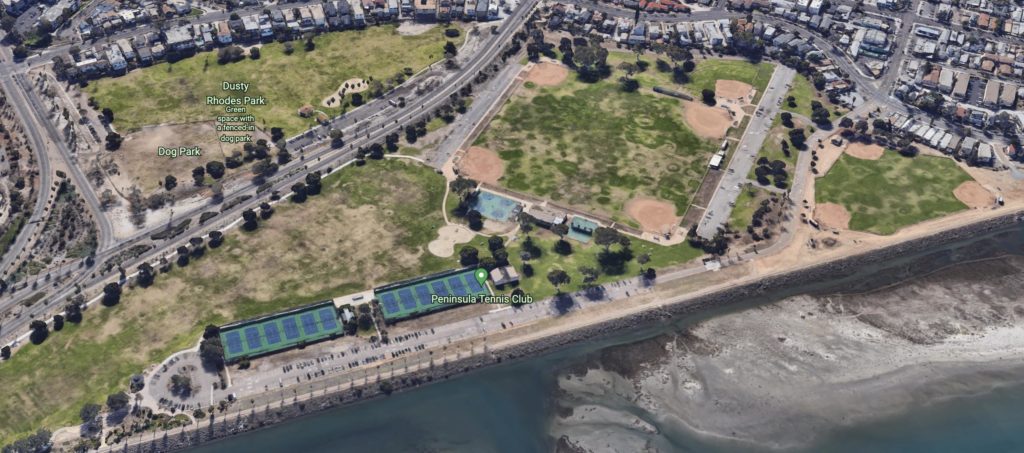
By Robert Simmons
Table of Contents[Hide][Show]
Currently in San Diego, two racket sports—tennis and pickleball—are engaged in a “turf war” over “scarce parkland”; at least that is what local news sources suggest.
In reality, two former tennis players turned pickleball provocateurs (Stefan Boyland and Mike Shinzaki) have been aggressively hounding city officials to hand over one particular public park tennis facility (Peninsula Tennis Club in Ocean Beach)—along with its ‘nonprofit’ Special Use Permit (SUP)—because the two claim it is the “perfect fit” to house their own turnkey for-profit pickleball business.
DIY Guide On How To Steal A Tennis Facility
Their previous for-profit proposals had been rejected at Nobel Park, Cleator Park, Liberty Station, Balboa Tennis Club, and the Barnes Tennis Center (where they claim to work as pickleball professionals, forcing the Barnes Center to issue a statement confirming that the two had in fact never worked there); their Peninsula Tennis Club proposal was also rejected more than once, but thanks to the local media, who decided to transform Boyland’s and Shinzaki’s ill-conceived ‘hostile takeover’ attempt into some larger political conflict over scarce resources, the city is now in a pickle, too.
WE, by its very definition, is a voluntary conglomeration of independent parts; with just the right amount of leverage, WE can be split in two every time. Why the media would choose to exert this kind of leverage—and tap into the general ugliness that is unequivocally America’s ‘fastest-growing’ National Pastime—is the more important story here, but before we open that can of worms, it is important to set the record straight concerning the original story.
The Great Pickleball Heist
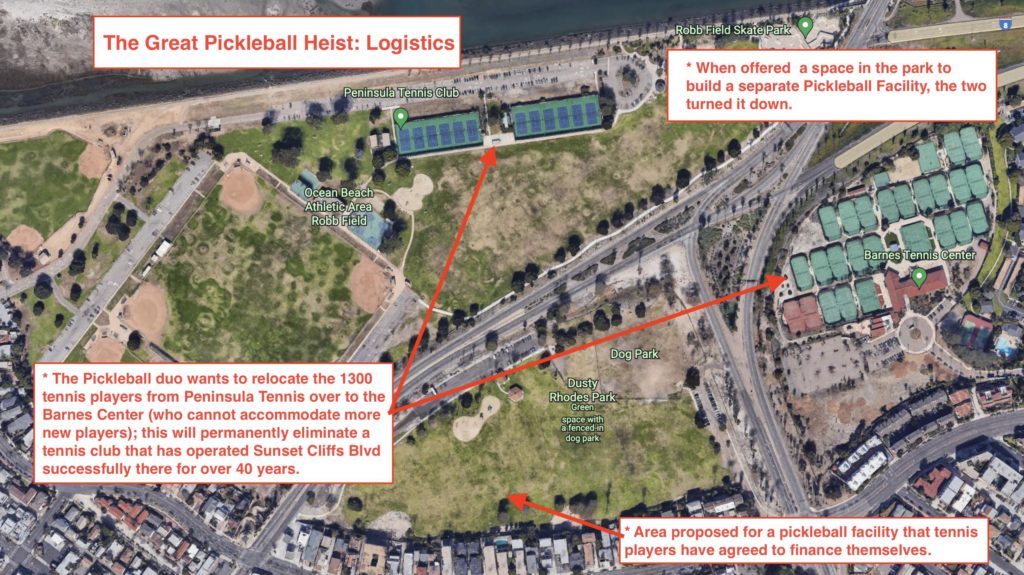
With the media as their megaphone, Boyland and Shinzaki claimed that the Peninsula Tennis facility was “starting to decay,” when in fact it had just resurfaced all its courts, replaced its nets and windscreens, and added new LED lighting—$150,000 worth of upgrades over the last five years.
They claimed Peninsula was “too expensive,” and they could charge their pickleball customers “less” while offering them “more.”
Peninsula charges $170 a year for adult memberships, $135 for seniors (kids play for free); pickleball players around the city are typically charged $5 a day to play, which means players would have to limit their usage to 33 days a year, if they hope to spend less than what the Peninsula Tennis Club members have to pay.
Boyland and Shinzaki claimed that both Peninsula and the Barnes Tennis Center were “vastly underutilized,” and thus Peninsula’s tennis players could simply be moved over to Barnes (which charges $350 a year for membership), leaving the Peninsula Tennis courts open for pickleball.
Lobbying Tactics Instead Of Facts
In reality, tennis has never been more active at both venues (Peninsula services over 1300 tennis players, for example). Further scrutiny of pickleball’s numbers turned up that the two had calculated Peninsula’s court use percentage based on the Robb Field Park hours—5:00 am to 11:00pm, seven days a week—instead of using Peninsula’s actual hours of operation.
Meanwhile, the Barnes Center countered by issuing a statement which clarified that it could not accommodate the 1300 tennis players who utilize Peninsula’s Tennis Club, as it was already busy fulfilling its mission to serve youth tennis, as well as local tournament play. In 2021 alone, Barnes hosted “50 youth and adult tournaments over 160 days during the year, that included over 3,500 players.”
At the April 21 Park and Rec Board Meeting, pickleball advocates questioned why the nonprofit Barnes Center was considered a “youth tennis facility”, instead of serving “adult (aka pickleball’s) interests.” (The answer: because that is why the Barnes Center was founded, how all the money was raised in order to build it, and how it secured its nonprofit status.)
When Boyland and Shinzaki needed actual proof that Peninsula was underutilized, they decided to fly drones over the courts to collect footage (purportedly this was done for one straight week, though the drones were spotted over the courts for several weeks).
No record exists of exactly what dates any of the data was captured, which was a wise move, as Peninsula uses a third-party online court-booking system that keeps a permanent record of all court usage.
The Peninsula Club Is A Non-Profit Organization
What the drones captured was footage of a club filled with daily USTA league play (it hosts 12 different teams), high school practices and matches, junior and adult play, and daily clinics that have swelled from 20-24 participants in 2018 (using 5 to 6 courts) to currently serving 25-30 players each, with an online waiting list constantly in double digits.
Once again, Boyland and Shinzaki were forced to change tactics; Peninsula’s courts went from “dramatically underutilized” to suspiciously overutilized. The two were able to access Peninsula’s finances, which showed that Peninsula’s nonprofit business ran on less than $50,000 a year.
By now, local media had traveled so far down the rabbit hole with Boyland and Shinzaki—with lie built upon lie—that the two could apparently say anything they wanted with complete immunity. They made wild claims that Peninsula Tennis Club represented “the shady underbelly of San Diego tennis,” laundering “five to six hundred thousand dollars” of unaccounted-for money by exploiting their nonprofit status.
Peninsula Club Is 100% Compliant With its City Contract
For the same reason doctors working at nonprofit hospitals do not receive tax breaks, tennis instructors must also pay their own taxes, and are not allowed to launder their incomes through the nonprofit entity in order to escape paying individual income tax. Peninsula Tennis Club instructors are required to pay up to 20% of their earnings in court usage fees, which covers half of the club’s expenses; yearly membership dues cover the rest.
This is the city’s current arrangement with the club, subject to change by them at any time. Boyland and Shinzaki have claimed to be in contact with the City Attorney’s office, and that there are now “serious legal investigations by the City Attorney into both the Peninsula Tennis Club and the Parks & Recreation itself for multiple potential violations” which so far have been kept so secret that only Boyland and Shinzaki seem to know about it. (Though these two cannot rightfully be credited with possessing any tactical skill, if pickleball did want to extinguish tennis, in order to replace it at the public park level, a great way to do it would be to somehow eliminate public tennis instruction.
False Narrative Allowed To Perpetuate Thanks To Media
Unlike pickleball, tennis is technically difficult to master without guidance; if affordable instruction was phased out, tennis would go back to being the sport of the wealthy, and pickleball could slowly overrun public tennis courts, effectively destroying this unique 100-year tradition in San Diego.)
The tactics of Boyland and Shinzaki echo the political rhetoric of the last 8 years: wherever a lack of common knowledge exists, they have created a false narrative, and forced the opposition to waste time refuting it; with tennis on the defensive, new lies can be created before the old lies can be debunked, which never allows ‘the opposition’ a chance to control the narrative.
For instance, the media never mentioned that the city parks department had offered Boyland and Shinzaki their own space within the same park (Robb Field in Ocean Beach), but they turned it down.
The mayor’s office made it clear to them that running a for-profit business in the park was “a non-starter” and they would have to apply for nonprofit status—and accept financial stewardship over their designated space–like all other SUPs.
Building Pickleball Courts Without Investing A Dime
Why would they walk away from this deal? This calls for speculation, but choosing not to invest their own money does jibe with the general game plan of many pickleball groups across the United States right now, who have instead attempted to convince tennis facilities private and public to build pickleball courts (or relinquish tennis courts), so pickleball players won’t have to invest their time or money to do it.
As rumors leaked out that park space was not as “scarce” as the media had initially asserted, Boyland went on the radio to ‘tweak’ the story yet again, claiming that the city already has “too much cement,” making ‘paved hardscape’ the actual ‘scarce resource’, and per ‘environmental standards,’ the “dying” sport of tennis should naturally relinquish scarce cement to this “rising” game of pickleball.
Every one of the 12 public tennis facilities and 24 private tennis clubs in San Diego County is completely self-sufficient. If one of the 12 public tennis clubs ever failed to maintain the space per the city’s specifications, that would be the better argument for replacing it with something else.
Yet Another Media Supported Lie
This has not been the case for the first hundred years of their relationship, however, which is why the city is understandably reluctant to dump tennis for a pickleball project in which pickleball players themselves won’t even invest. (Boyland’s latest lie, that public tennis clubs “are subsidized by taxpayers,” is another example of capitalizing on the public’s lack of knowledge.
Since Proposition 13 was passed in 1978, the city had to cut many services to the public, and count on public spaces to maintain themselves; not only has there never been tax money available to tennis, these clubs actually save the city money, by maintaining the space around the courts while offering a service to the community.
Oddly, when Proposition 13 was cited in a recent Union-Tribune piece attempting to rebut Boyland’s claim, the editors chose to remove it, explaining that “no one would understand this reference, not even ‘older people;’” Fortunately, the Peninsula Beacon felt it was not over the heads of their readers.)
Another fact that media chooses not to print is that San Diego tennis players have been working with the city to build the pickleball community their own dedicated nonprofit public facility, paid for by tennis players, since 70% of pickleball players are current or former tennis players anyway.
A small faction of pickleball purists are allegedly circulating that they would rather take tennis courts from the tennis community than go play on pickleball courts built by tennis players, but this simply speaks to the general divisiveness that the media has both incited and amplified.
Boyland and Shinzaki have attempted to turn the story around, saying that tennis is “pretending to embrace pickleball with insincere and hasty alternatives to put in a few courts and control the sport’s growth,” of course asserting that “a pickleball facility should be managed by pickleball players and for pickleball players”—yet apparently not funded by pickleball players.
For a Few Dollars More

Google ‘tennis’ and pickleball will come up; google ‘pickleball’ and tennis will come up, and the story will always include how pickleball is growing and tennis is not, when the reality is that tennis is by far the largest racket sport, and tennis players are the ones who both create and dabble in these other racket games.
Beach Tennis, paddle tennis, Padel, pickleball (and 30 other variations) have sprouted through the years.
Pickleball itself was jury-rigged together in 1965 because a backyard badminton court was sitting unused, but the new owners—bored one afternoon—could only find some ping pong paddles and a plastic ball lying around.
Pickleball was officially named a sport before tennis even began its major boom in the 1970s. Look back ten years ago, when pickleball was the ‘least popular racket sport’ in America, then add up the number of news articles over the last 7 years, and the real story might be “Pickleball: The Most Hyped Game in All of Media.”
Oddly, the media has always been on the pickleball wagon. Around 2015, when pickleball boasted 2 million participants, industry leaders –through the voice of the media—predicted that “in a few years, we expect there to be 8 million.”
Even with the boost Covid caused in all racket sports, 7 years later the sport currently sits at 4.8 million enthusiasts, 68% of them seniors (aka ‘baby boomers’) who have allegedly moved from tennis to something less physically demanding (though mounting evidence seems to confirm the opposite).
By pickleball’s own admission, still-active tennis players comprise as much as 70% of the pickleball community; without them, pickleball’s numbers would sit around 1.5 million players today (probably less, as pickleball grows partly because of support from the tennis industry and its players, to hype it and secure it court space).
Tennis Has Grown Substantially
Through the media, these same industry leaders told us tennis participation had “flattened out,” and that pickleball was “the fastest-growing” game in America. Again, they were providing alternative facts in both cases.
In reality, tennis has grown by 6.8 million players in 2020 alone (3 million were new to the game, 3.8 million returned to it), which constitutes a gain of 22%, for a total of 21.7 million American participants. Pickleball grew by 1.1 million members (or 21.3%) in the same period.

The San Diego Union-Tribune appears to have a lot invested in pickleball. After giving Boyland and Shinzaki a platform to sell the message that tennis hardscape is “vastly underutilized,” they followed it up with a series of four “heart-warming” “non-confrontational” stories—all in one day (over the recent Fourth of July weekend)—meanwhile shelving all scheduled tennis pieces.
According to the editors, because the pickleball stories were all “pretty ‘fun’ pieces and none involves controversy,” they felt it best to keep tennis and pickleball ‘separate but equal’ (yet subtly, each of the four articles takes a jab at tennis somewhere in the piece).
Seemingly lost on the media is that ever since it created “The Great Indignation,” it generated a content loop within the pickleball community, who now believe that a covid-inspired growth model of “cannibalizing” tennis courts is their best and only survival strategy.
The Real Battle Is Within The Media: The Struggle For Advertising Dollar Resources
The subliminal advertising being generated— “out with the old and in with the new”, “there are always going to be winners and losers’”, “the ‘free market’ is the only fair way to decide our eternal fight for scarce resources”—reflects the real battle going on within the media itself, as it desperately forages for scarce advertising dollar resources, and will hitch itself to any pickleball wagon that comes along, give it fuel, ride it until it runs out of gas, then ditch it for something better.
In the old days, when the city did supply tennis courts (for high schools or city colleges), they were all made of asphalt, with weeds growing up between the cracks and nets made from metal fencing. All the nice courts you see in the city now were financed by tennis patrons.
If pickleball wants the city to foot the bill, it should expect pretty much what it is getting right now: lines painted on cracked asphalt. The only other options are to form a nonprofit and build the courts through fundraising and donations, or else invest in private facilities; all three options are currently being implemented in San Diego.
Removing Public Tennis Will Hurt Local Communities
Thanks to the tennis community, there are four options; private tennis clubs are incorporating pickleball courts into their facilities to accommodate those members who play both. Within two miles of Robb Field, the Barnes Tennis Center, the Cabrillo Rec Center, and San Diego Tennis & Racket Club have dedicated pickleball courts already in place; further up the road, even the prestigious La Jolla Beach and Tennis Club has built dedicated pickleball courts for its members.
It must be frustrating to local government to see the Union-Tribune print that pickleball has “zero” dedicated pickleball courts locally when it is frantically restriping hardscape for them all over the city.
No one seems to know exactly how many pickleball courts there are in San Diego right now—not because there are so few—because there are so many. Places2Play.org lists over 155 public courts around San Diego serving an alleged “50,000 pickleball players,” and pickleball players admit that there are several places not on this list. Public tennis courts can only boast 159 courts total for the “nearly 300,000 players” in the area, understanding that “70% of tennis in the U.S. is played at public facilities.
Prior to the Great Indignation
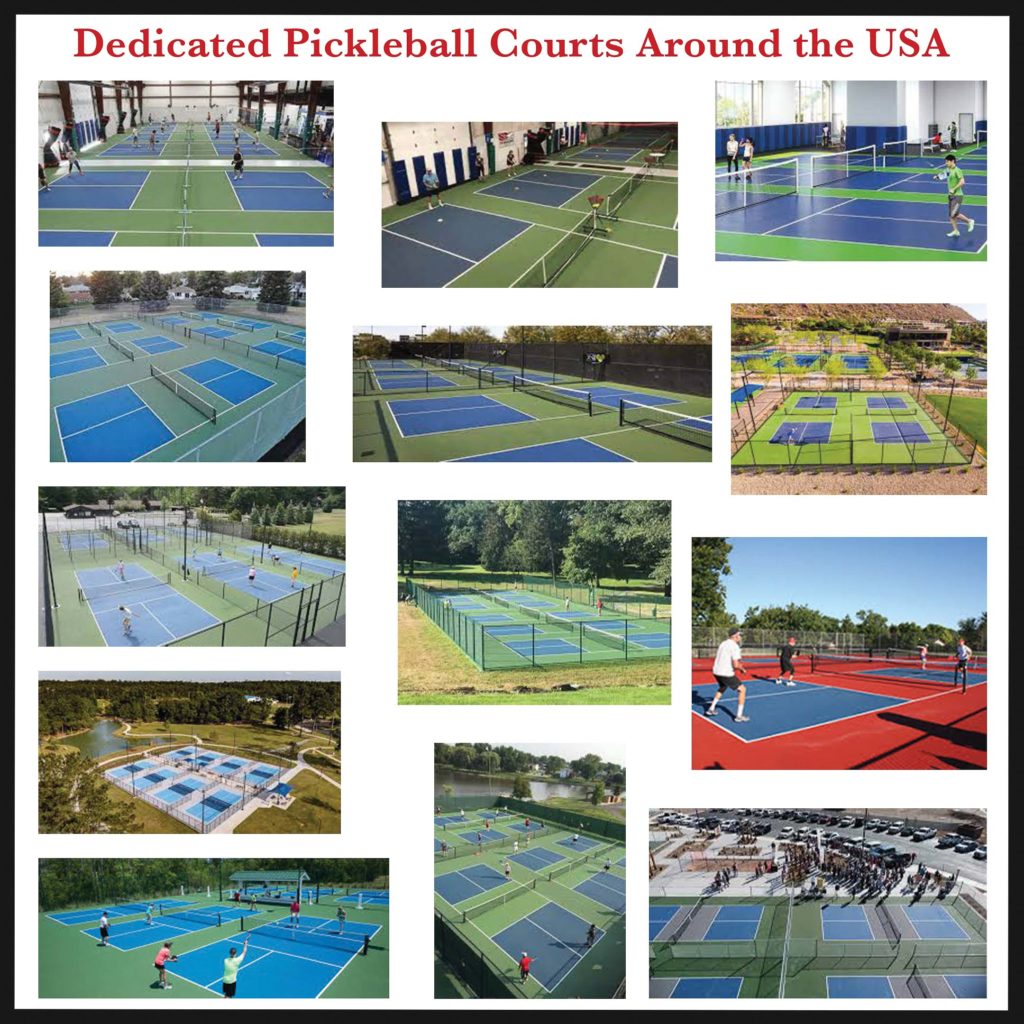
Tennis is part of the San Diego Public Park System because that is where it started 100 years ago.
From the beginning, tennis players built and maintained tennis courts on land leased to them by the city.
While a few private tennis facilities were eventually built within the city, most private clubs are located in what San Diego call ‘North County,’ which is generally seen as a more affluent part of San Diego County.
Overall, the popularity of tennis in San Diego generally outpaces the rest of the country, in no small part due to its cooperative weather.
The accelerated growth of pickleball in San Diego can be traced back to two San Diego tennis teaching professionals, who bought a failing North County tennis club for cheap, originally to teach tennis without the hassle and instability that comes with working for someone else.
Bobby Riggs Tennis Club—nestled among some very well-financed private tennis facilities—was by comparison a little run down, and with few members to support it, the owners were at a crossroads about how to bring in enough money to support themselves and make the improvements necessary to draw in new business.
As the story goes, some pickleball players walked up and asked if they could lay down some painter’s tape on an unused court and play, “and the rest is history”. Soon, the whole venue was dedicated to pickleball, as the owners invited every tennis player they knew to come try it out.
The best part was that for very little money down, the owners could lay down lines and supply some nets, then charge everyone to drop in and play for as long as they desired. Thus, the early model for pickleball in San Diego was formed: a new game for tennis players, promoted by tennis players (who grew up on public courts) and played by laying tape down on top of ‘underutilized’ tennis courts, which were made available to anyone for the low, low price of just $5 a day.
As hundreds of area tennis players and other locals filtered through Bobby Riggs Tennis Club to try pickleball, they came back to their communities armed with the idea that pickleball could be played for dirt cheap, using only some tape and any available hardscape—preferably, a tennis court.
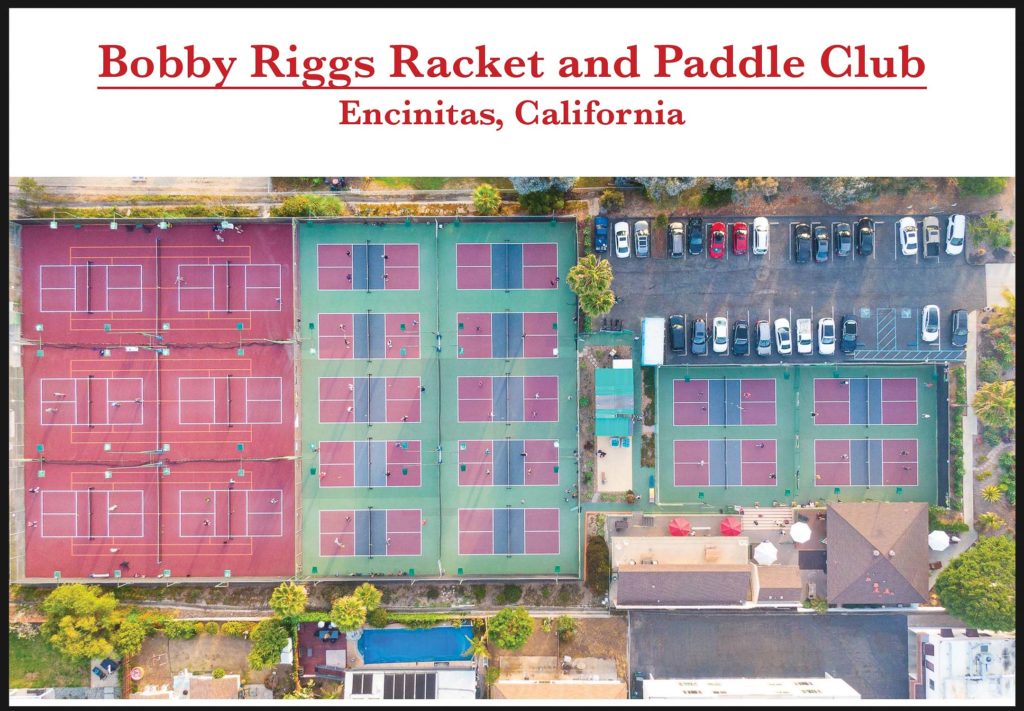
Finally, the Bobby Riggs owners collected enough money to recently build some true pickleball courts, for which they can now charge $12 per hour (no memberships available, just first booked, first served).
Meanwhile, tennis players had begun convincing management to build pickleball courts back at their private clubs.
Thus, during the ‘early years’ of pickleball in San Diego (2015 to 2018), the model was to lay tape down on paved hardscape, because that is how everyone had learned to play it.
Understandably, when more and more true pickleball courts were added, people began to prefer them.
It was wise for Bobby Riggs—who helped introduce pickleball to the tennis community—to stay ahead of the curve and install ‘official’ courts, for which they are now able to benefit financially (from limited supply and growing demand). It is also understandable that the city–still at least two years behind on everything from the effects of Covid—would be slow shifting gears on this demand, when it only learned about it in January of this year.
For all those non-tennis playing pickleball newcomers, it is understandable one would want to play for cheap until deciding whether or not to commit to the game financially. From a tennis perspective, if one wishes to play the game competitively, practicing on a ‘dedicated’ tournament-level court would be important, and worth paying to ensure (Bobby Riggs has those for $12 an hour).
If one is only out for the fun, social aspect of the game, the quality of the infrastructure is less of a priority. When seeking both quality and value, there is but a single viable strategy available: to separate oneself from the agenda of rabble rousers like Boyland, Shinzaki, and the media, then pursue more amicable relationships with the only two allies San Diego pickleball has right now, which is tennis and the city, both of whom are understandably feeling a little defensive at the moment.
In the end, institutions—like tennis clubs, park and rec departments, and city governments—are comprised of people, and it’s really about time we all learn to get along with ourselves better, in order to get what we want; it is by far a more effective strategy than starting a ‘turf war,’ where the fight itself and the emotional scars afterwards are the only guaranteed results.
In Divide and Conquer, a ‘Tie’ Goes to the Ruiner
Divide and conquer is a terrific principle for coming to power in a Democracy.
Bruce Bueno de Mesquita
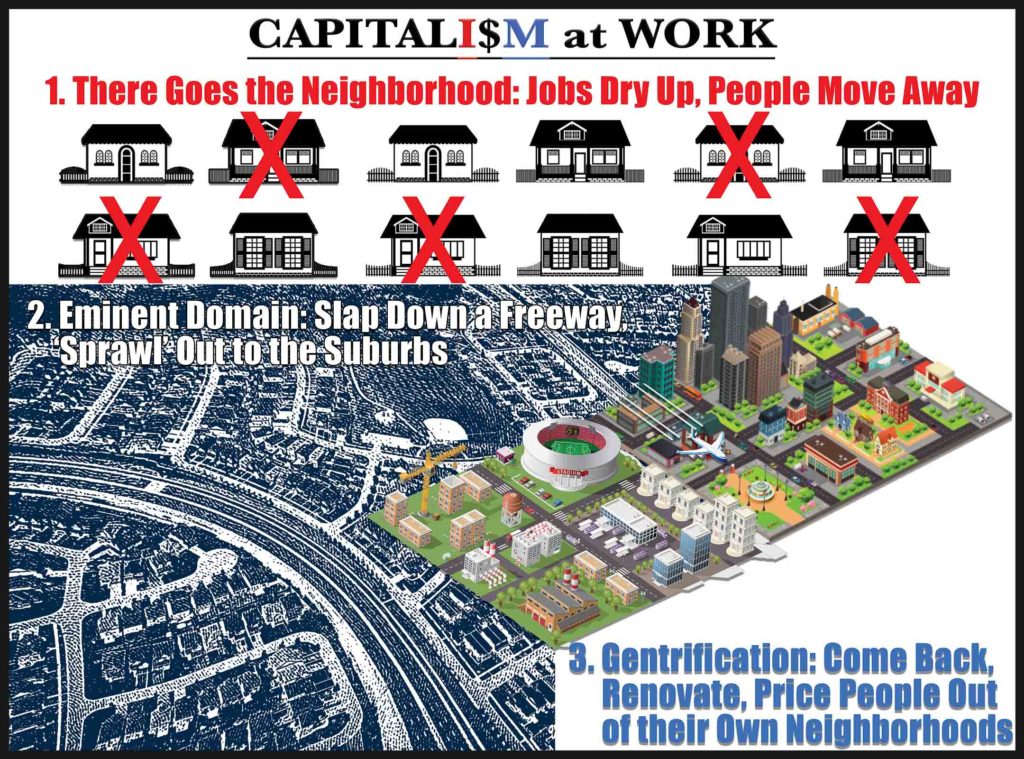
It would be remiss not to zoom out for a moment and frame this tiny battle within the greater uncivil war going on in America: an unholy crusade to privatize Democracy, as financial autocrats seek their manifest destiny at the expense of ‘the commons’.
Any hostile takeover of ‘public goods’—which are in place to secure Democracy—in effect dismantles It.
Coupled with the tools of eminent domain, gentrification, regulatory capture, corporate tax incentives, gerrymandering, and Supreme Court infringements on personal liberties, the gap can only widen, while the media—who assures us that Democracy dies in darkness—is, in fact, unceremoniously butchering It in broad daylight on their front pages every morning.
By continually stoking any dying embers in this 250-year division between ‘management’ and ‘labor’, the media becomes complicit in the overall private-sector con that when Americans fight with each other, somehow Democracy is being served, when in fact it is being crippled, in order to render it ineffective; this is how the private sector has managed to enter through the front, the side, and the back door of what is supposed to be the people’s government, and occupy every branch and department, dictating policies to which the majority of Americans would never agree to implement, if allowed any actual say in matter.
Incredibly, every current skirmish in America can be traced to this larger war between two competing versions of Democracy—each with its own definition of equality, liberty, and justice—and in this war, our media has become a major player.
It can sell its weapon to both sides of any conflict, like our Military Industrial Complex, and as it constantly cashes in on the media-hype it creates, it is in effect buying back its own stock, like a Wall Street corporation. Similar to the police, our media is tasked with overseeing the public, which begs the question ‘who is in charge of overseeing them?’
Shining the light on others all day long necessarily leaves one constantly operating in the shadows, and occasionally, Democracy does die within this darkness, though in truth, Democracy is only afraid of the dark when it is forced to live in an autocracy. The real “turf war” right now is between the autocratic contender—Capitalism—which is running a racket (and making a racket) in its bid to replace the ‘people’s champion’ (and current underdog)—Democracy.
Capitalism is currently kicking Democracy’s ass: money is now free speech, corporations are people, possession is nine-tenths of our liberty, justice only shows up (with a broom and forensics unit) long after injustice has had its way, and while some can afford to purchase more and more equality, others are forced to compete for it in the tug-of-war over increasingly scarce publicly controlled ‘goods.’
Our news media, the side hustle of everybillionaire) and the day job of six main conglomerates (Time Warner, Walt Disney, NBC Universal, CBS Corporation, Viacom, and Rupert Murdoch’s News Corp.) has become Capitalism’s propaganda machine, subliminally selling us the same message over and over: let the ‘market’ (aka private sector) decide matters of Democracy; “most people won’t notice any difference.”

Facts almost always get in the way of telling a good story; in Capitalism’s ‘democratic’ media, writers are paid to shut up and dribble out stories that their ‘constituency’ wants to hear; those writers who desire a steady paycheck make sure to fit the ‘facts’ to those particular stories.
Spinning divisive tales and hyping new products has necessarily become the new media business model, replacing the old model—creating an informed citizenry—which marketing data apparently suggests is no longer a financially viable paradigm.
Sadly, marketing is correct on one point: the country is divided.
Drop this ‘constant’ into a profit-seeking equation, and the answer will always come back the same: fomenting division, real or fabricated, is media’s best and only financial option, because “if we don’t do it, someone else will.” To survive in this business, news must perpetually stage massive car wrecks for rubbernecking readers to gaze upon daily, and turn true stories of rabble-rousing extortionists into a tall tales about community members fighting city hall and the “status quo, just trying to ‘get some Democracy’.
True Democracy is served by bringing everyone into the conversation, toward an inclusive decision; not only to grow civic engagement, but also to hone our ‘civic virtue,’—to teach people the process of creating a just society. The data suggests that 300 million Americans do not play tennis or pickleball, and therefore would only know what the media tells them—or does not tell them—about this situation.
It is not easy to engage a large citizenry, who is rarely moved to action until a problem suddenly becomes their problem, too. Britain and France saw Germany’s 1938 annexation of Czechoslovakia as a “reasonable concession,” because it wasn’t happening to them. The imperialistic ‘Rape of Africa’ was likely predicated on the premise that the territory was “vastly underutilized.”
So, how could this story about pickleball and tennis be instructive for all Americans? Every story is a teachable moment, perhaps to outline a process for others to follow, should similar situations befall them. If the process is broken or can be improved, perhaps this becomes an opportunity to interject ways to improve efficiency and effectiveness, which are economic terms from back when economy meant more than simply profiting financially.
If we want Democracy to work, ongoing civics lessons are needed, and the best teachers should know how to tell stories that grab our attention—even entertain us—but always in order to deftly lead us toward the civic virtue needed to run a democratic society. The Forebrain Underground supports this version of a ‘democratic’ media.
From the Third Option

The good news is that we do not have to frustratedly attempt to fix the brand of Democracy we are currently using, since it is not fixable, anyway, and only leaves us feeling defeated, disgruntled, and ultimately, disengaged.
It is much more ‘economic’ to just replace it with the original brand, which we can continue to upgrade as necessary, in order to best navigate our ever-expanding universe.
We invite everyone to join us in helping define the difference between power (empowerment) and control (oppression), so that people might better differentiate between our two competing versions of Democracy, and no longer let them divide us.
Help us educate everyone to recognize real Democracy when they see it, which will move us closer toward the Democracy which was always promised—and paid for by Americans many times over—but never delivered.
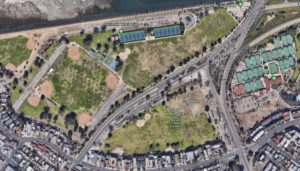
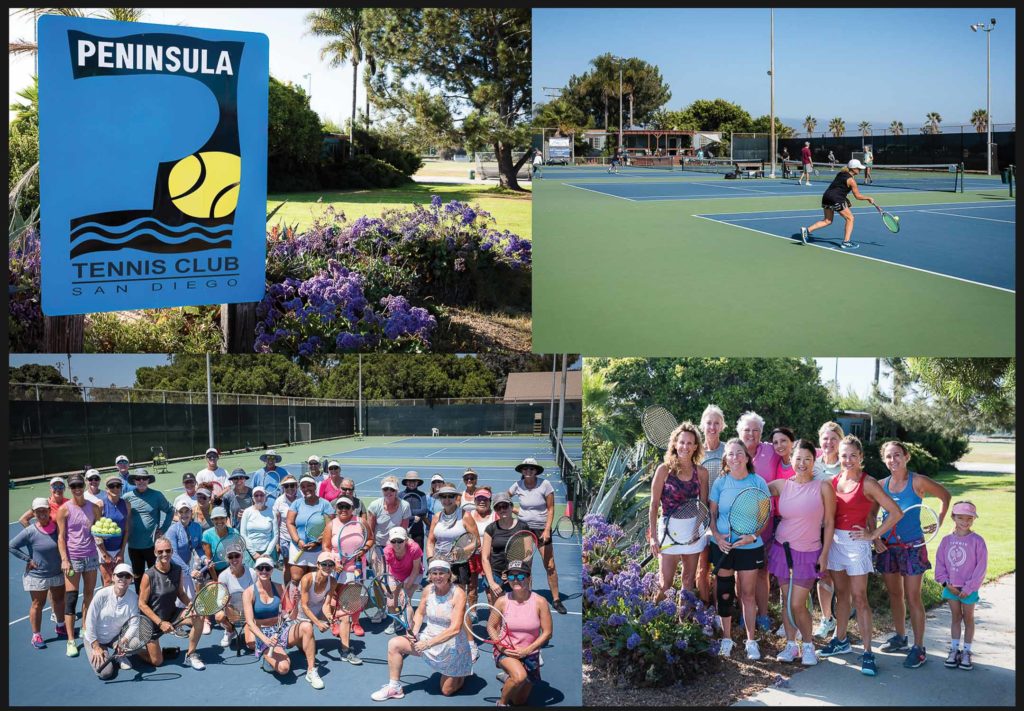
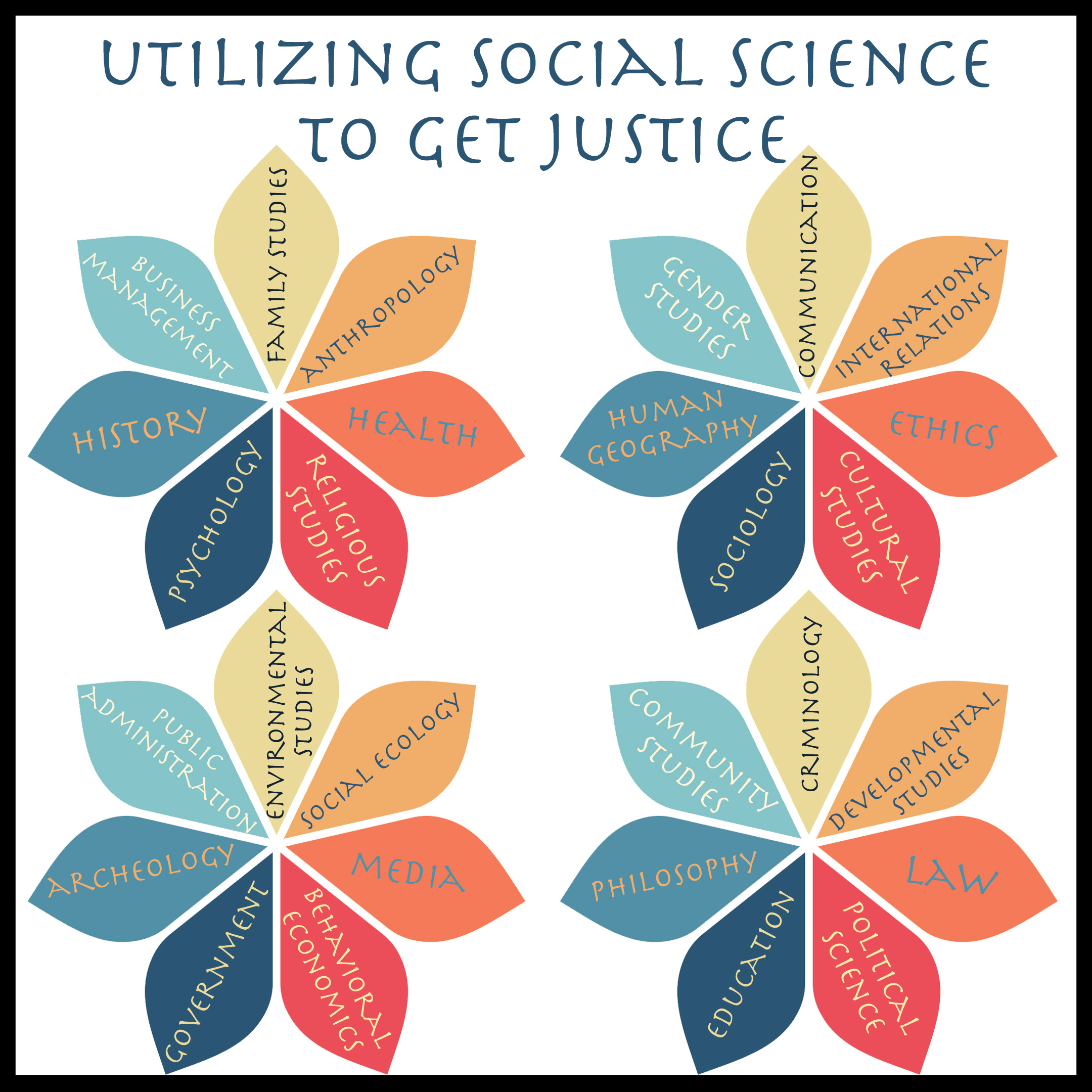 Toward a Unified Theory of Justice in America
Toward a Unified Theory of Justice in America